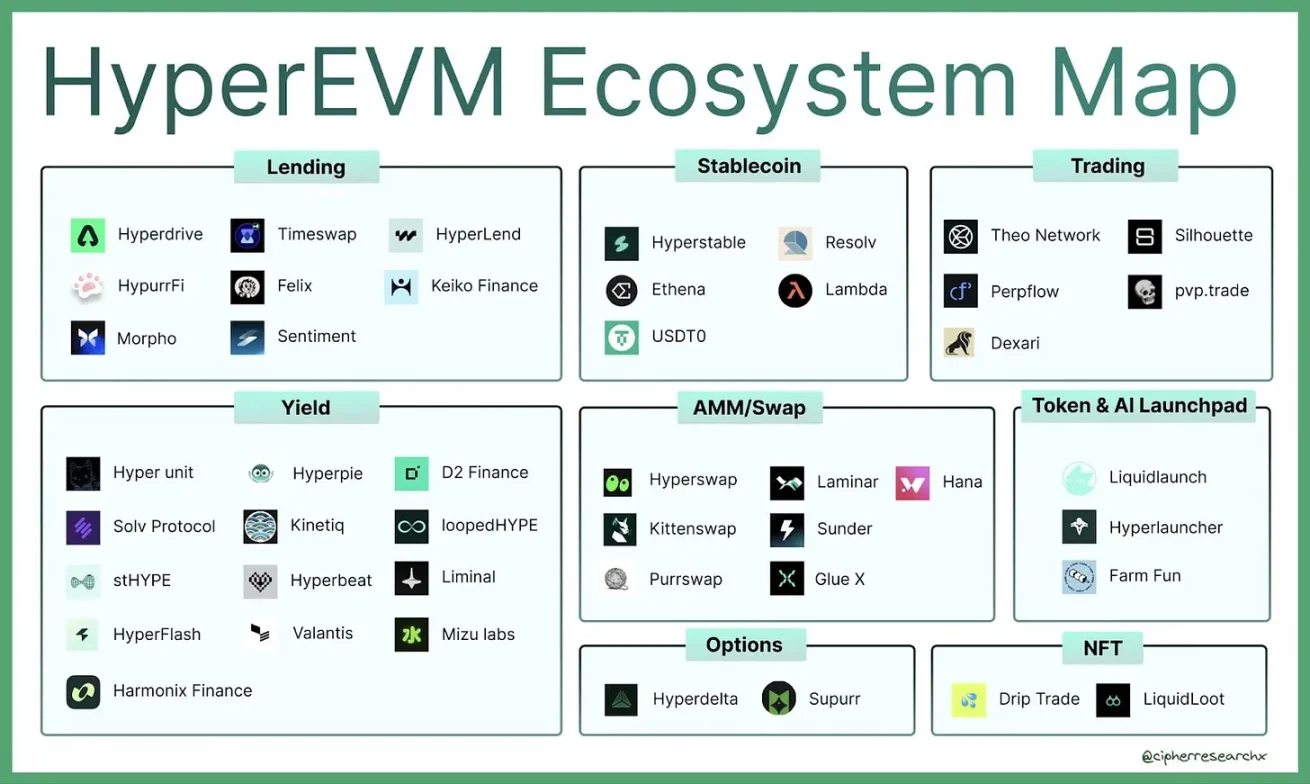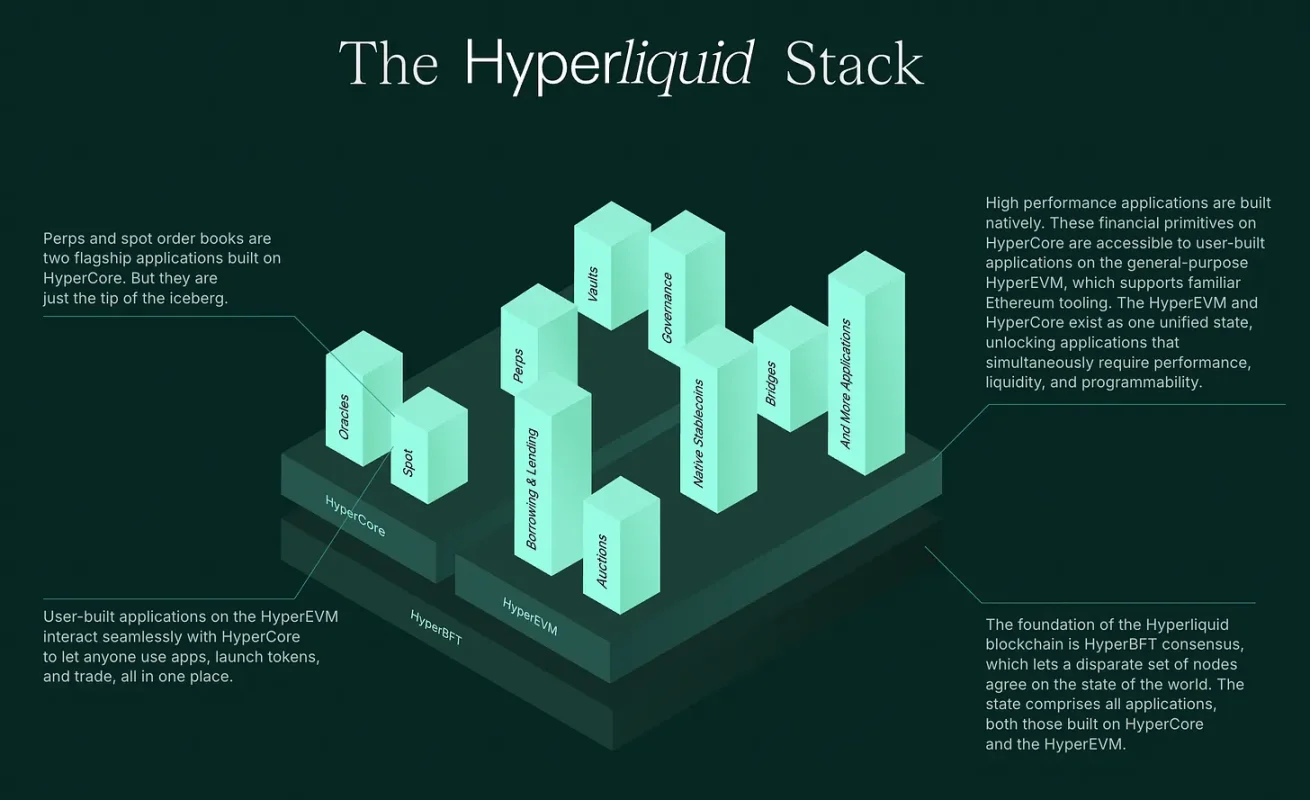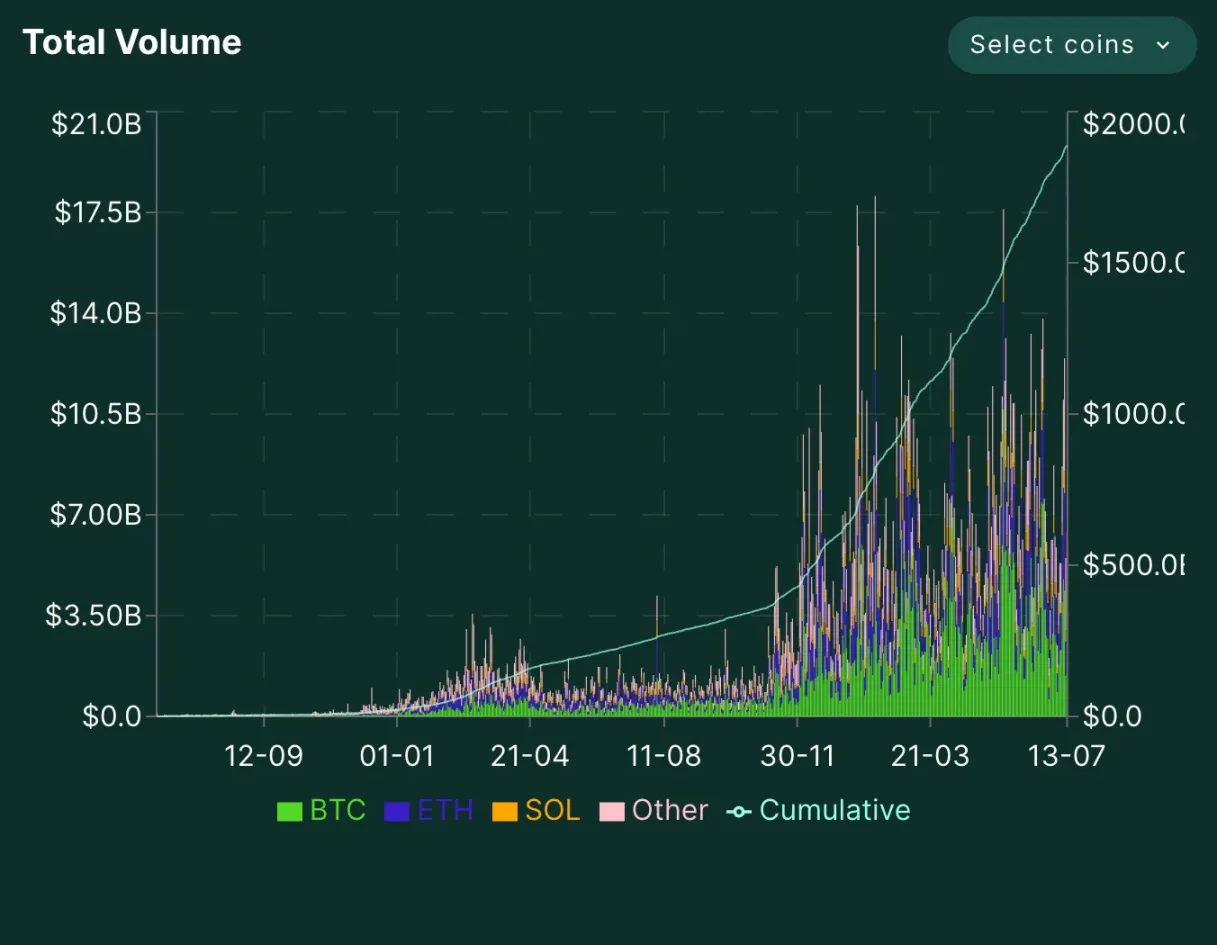A physics department top student builds the quietest giant in the cryptocurrency world.
Written by: Thejaswini MA
Translated by: Luffy, Foresight News
Jeff Yan has a fondness for chameleons. But it’s not the metaphor of "blending into the environment" that fascinates him; it’s the animal itself. His Twitter handle is @chameleon_jeff (note: chameleon is the English word for 变色龙), and in a recent podcast, he explained this obsession: chameleons can independently turn their eyes in different directions, "with two claws forward and three claws backward, showcasing a very interesting evolutionary trajectory," and they have powerful tongue projection abilities. "They are a bit like aliens on Earth," he said.
This strange opening gives you insight into the man. With just a 10-person team and zero venture capital, he has built one of the largest trading platforms in the world.
In the past 12 months, Hyperliquid's trading volume has reached $1.8 trillion. The platform holds over 10% of the global perpetual futures trading market and accounts for more than 70% of the trading volume in decentralized exchanges (DEX) for perpetual contracts. Over 200,000 active users trade on the platform daily, generating hundreds of millions in revenue.

Jeff Yan did not initially set out to create one of the largest decentralized exchanges in the world. However, in less than two years, he achieved it. Jeff identified problems that others overlooked and solved them.
System Thinker
Jeff Yan's journey in cryptocurrency began in Palo Alto, California, where he grew up in the heart of Silicon Valley. Unlike many of his peers focused on creating consumer internet companies, Jeff was deeply interested in the intersection of mathematics, physics, and complex systems.
In 2013, when most high school students were busy worrying about prom, Jeff represented the United States at the International Physics Olympiad and won a gold medal. Such achievements were enough to get him into any top university, and he even received a pile of job offers before graduation.
Naturally, he attended Harvard University to study mathematics and computer science, and after graduating, he immediately joined Hudson River Trading (HRT). In this extremely secretive high-frequency trading firm, people could earn millions by being a few microseconds faster than others.
"I learned a lot about the market and how to think rigorously about it," Jeff said. At HRT, Jeff focused on solving complex problems that combined engineering and mathematics. He learned how to build low-latency systems capable of executing thousands of trades per second. He understood how market makers provide liquidity and how different types of trading processes affect market efficiency.
After a few years at HRT, he noticed an opportunity and turned to explore the crypto space.
In 2018, he attempted to build a Layer 2 prediction market platform, even raising some funds and moving to San Francisco to form a team. But that attempt ultimately failed, as regulatory uncertainty and low user acceptance led to its demise. This experience taught Jeff valuable lessons about what cryptocurrency users truly want.
From 2018 to 2022, after the failure of his prediction market platform, Jeff Yan shifted his focus back to trading. Initially, he treated cryptocurrency trading as a side job and quickly discovered severe inefficiencies in the market. Recognizing this opportunity, he scaled up his operations and founded the cryptocurrency market-making firm Chameleon Trading in early 2020. During the bull market, the company rapidly grew to become one of the largest market makers for centralized crypto exchanges, establishing Jeff's reputation in the quantitative trading field.
Then, FTX collapsed.
In November 2022, Sam Bankman-Fried's empire crumbled, and the exchange, once seen as a star of the cryptocurrency future, fell apart. Remember the $135 million naming deal with the sports arena? They had celebrities like Tom Brady and Larry David endorsing them.
"We witnessed the problems with FTX firsthand," Jeff recalled, "People realized that cryptocurrency was supposed to be a fun game, but it stopped being so when some bad things happened."
Jeff watched billions evaporate overnight as users entrusted their funds to a centralized platform. Most would see this as a warning to stay away from cryptocurrency, but Jeff viewed it as a challenge.
Building Rockets in a Garage
The obvious solution was to create a decentralized exchange that could compete with large centralized exchanges. The idea was simple, but nearly impossible to execute.
Every blockchain Jeff examined had issues. Ethereum was too slow; Layer 2 solutions added latency; Solana was relatively fast but still insufficient for large-scale trading. All options required compromises, ultimately making exchanges worse than they currently were.
Thus, Jeff made a reasonable decision: due to the hard requirement of user experience, he decided to build his own blockchain from scratch.
The end result was Hyperliquid—a blockchain designed specifically for trading, capable of processing 200,000 transactions per second and achieving near-instant finality. Users can trade with up to 125x leverage across more than 145 different markets while ensuring the safety of their funds.
Most startup stories revolve around raising $50 million from top venture capital firms and then hiring hundreds of engineers to scale. However, Jeff's approach was different. He funded development with the profits from his trading company and kept the team lean, with only 10 people.
"We started from scratch," he said, "No need for financing, so the decisions were simple."
Jeff believes that having venture capitalists hold large stakes in decentralized networks will become "scars on the network" and harm its long-term development.
This self-sufficient approach allows Jeff to fully focus on building a product that users love without catering to investor expectations. This also led to one of Hyperliquid's most innovative features: when the platform launches the HYPE token in November 2024, 31% of the token supply will be directly allocated to users based on their trading activity. This is one of the largest user-centric token distributions in the cryptocurrency space. The remaining tokens will be allocated to future community rewards (38.88%), core contributors (23.8%), the foundation (6%), community grants (0.3%), and a small amount for protocol upgrades (0.012%).
This token distribution model is feasible because Jeff did not sell equity to venture capitalists, who would otherwise demand preferential allocations. By remaining independent, he can prioritize community ownership over investor returns.
When Hyperliquid launched in 2023, there was no press release, no collaborations with KOLs, and no billboards in Times Square. Jeff simply opened the doors and waited for the future.
What followed was explosive growth that caught everyone off guard. Within 100 days, daily trading volume reached $1 billion. By mid-2025, monthly trading volume is expected to reach $2.48 trillion, putting Hyperliquid on par with Binance and Coinbase.
In just two years, Hyperliquid grew from zero to over 545,000 users.
"We don't have a marketing department," Jeff admitted, "I think our community does a fantastic job, better than all those marketing departments of centralized exchanges."
This is not luck. The entire platform Jeff designed revolves around aligning incentives with users rather than extracting value from them.
This approach is so radical that other exchanges may not be able to replicate it even if they wanted to. After all, when you've already raised hundreds of millions from venture capital firms, you can't just give away most of the tokens to users.
Ecosystem
While Hyperliquid initially started as a perpetual futures exchange, Jeff's vision has always extended beyond simple trading. In early 2025, the platform will launch HyperEVM, an Ethereum-compatible virtual machine that allows developers to build financial applications directly on Hyperliquid's blockchain.
The ecosystem is developing rapidly: the collateralized debt position protocol Felix currently manages over $400 million in assets, while the lending protocol HyperLend manages $380 million. Jeff states that the ultimate vision is to centralize all financial operations on one platform.

The problem Jeff identified is common across all cryptocurrency exchanges: experienced high-frequency traders use bots to quickly buy or sell before market makers can update their quotes after posting prices or even during price movements. As a result, market makers are forced to widen spreads to protect themselves, and ordinary traders end up paying higher fees.

Hyperliquid addresses this issue by lowering the priority of fast "taker" orders. Instead, the platform provides market makers with a fair opportunity to update prices, meaning lower spreads and better prices for all users.
The platform's order matching engine employs a price-time priority mechanism with additional rules for smooth execution. Under specific conditions, the priority of special orders like cancellations and limit orders can be higher than that of regular orders, allowing market makers to respond to new information and adjust quotes, avoiding being targeted by fast traders.
This subtle change encourages market makers to quote tighter spreads, as they are less likely to incur losses from latency arbitrage. Ultimately, everyone on the platform benefits from better prices and higher liquidity. All of this occurs on-chain, making the entire process transparent, allowing users to see fairer and more consistent outcomes.
This depth of technology may be why professional traders—who are most sensitive to execution quality—choose to use Hyperliquid despite having access to every centralized exchange in the world.
What Happens Next
However, Jeff faces an interesting question: how to scale a 10-person company handling trillions in trading volume?

His solution, as always, is counterintuitive: instead of hiring more staff, he aims to build tools that allow others to create applications on Hyperliquid.
"If something can be done by someone else, it should be done by someone else," Jeff said. "We can hardly do anything. I think this is actually a blessing in disguise."
The platform recently launched a permissionless market creation feature, allowing anyone to create new trading markets by staking HYPE tokens. However, the threshold of 1 million HYPE tokens (worth tens of millions of dollars) means that not everyone can access this service. For users who meet the threshold, developers can retain 100% of the fees from the markets they create, something no traditional exchange can offer.
Jeff is also in talks with sovereign wealth funds to build financial infrastructure, but he is reluctant to disclose specific countries. The goal is to prove that decentralized systems can handle the scale and complexity of national financial systems.
In July 2025, Nasdaq-listed biotech company Sonnet BioTherapeutics announced its entry into the cryptocurrency space by establishing an entity valued at $888 million, focused on holding HYPE tokens. This deal will make the newly renamed Hyperliquid Strategies Inc. the company holding the most HYPE tokens among publicly traded companies in the U.S.
In an industry filled with grand promises to completely change everything, Jeff has built something simple yet effective. There are no high-profile claims of "serving the unbanked" or grand visions of "Web3 changing the world," just a platform that traders genuinely enjoy using.
"We focus on building products that users love," Jeff explained, "Everything else is secondary."
This approach seems to be working. Hyperliquid currently handles over 10% of global cryptocurrency derivatives trading, all operated by a 10-person team with no marketing budget. For Jeff, this is just another engineering problem to solve.
免责声明:本文章仅代表作者个人观点,不代表本平台的立场和观点。本文章仅供信息分享,不构成对任何人的任何投资建议。用户与作者之间的任何争议,与本平台无关。如网页中刊载的文章或图片涉及侵权,请提供相关的权利证明和身份证明发送邮件到support@aicoin.com,本平台相关工作人员将会进行核查。




